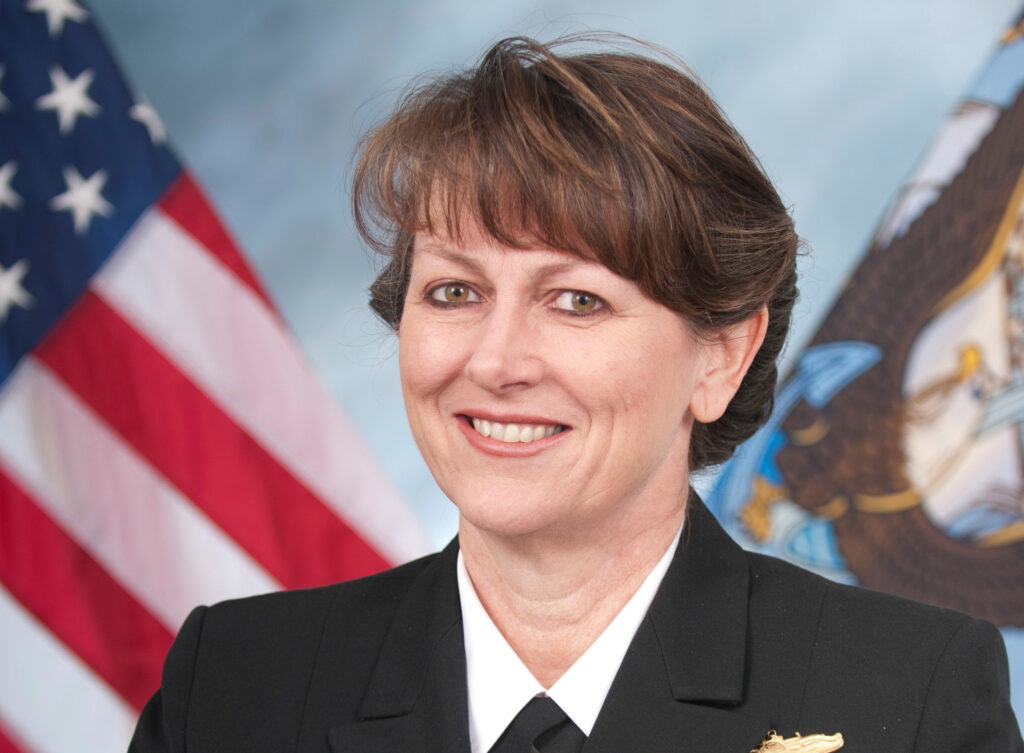
Vice Adm. Jan Tighe
WASHINGTON: There’s been a sea change in the Navy. Training and organizations are changing as admirals raised on missiles and torpedoes come to terms with cyber warfare — both as a potential weak point and as a weapon.
“I don’t think we could have said it two years ago,” Vice Adm. Jan Tighe told me. 2014 is when Tighe took over Fleet Cyber Command, aka 10th Fleet. But after two years of 10th Fleet showing Navy leaders how vulnerable their systems were — and after headlines like the North Korean attack on Sony — “the highest level of leadership understands,” she said. “Getting it down further and making it more meaningful at the deckplate level, that’s where the challenge remains.”
Last week, the Pentagon announced Rear Adm. Michael Gilday, currently director of operations (J-3) at Cyber Command, would take over 10th Fleet from Tighe. Gilday spent most of his career on warships, whereas Tighe is a career cryptographer. The handoff is a sign of how the Navy is integrating once segregated specialties. Tighe in turn will replace Vice Adm. Ted Branch, an aviator, as deputy Chief of Naval Operations for information warfare — formerly known as “Information Dominance.”
The name change deliberately discards the hubristic idea that the US is destined to “dominate” any domain. Instead the focus is on fighting for advantage against technologically savvy adversaries — in the worst case, Russia and China — who can hack our networks and jam our transmissions.
It’s a “shift from dominance and overwhelming force…to speed, agility, precision,” Tighe said of the name change, speaking at last month’s Sea-Air-Space conference. “We start sounding a little less like professional wrestlers — ‘the Dominator’ — and more like the American Ninja Warrior.”
“What we’re doing in information warfare is all about warfighting.” said Vice Adm. Branch, the outgoing Deputy CNO, speaking at Sea-Air Space. “(What’s) really picked up speed in the last year or two (is) making the information warfare community more recognizable and therefore more accepted by the traditional warfighting communities in the Navy.”

Vice Adm. Ted Branch
That includes changing accessions, training, and continuing military education for the information warfare community to be more like the traditional parts of the Navy, Branch said. The IW community now has a “type commander,” equivalent to the administrative admirals who oversee state-side training, maintenance, and personnel for Navy vessels. Most recently, said Branch, the Navy has founded an Information Warfare Development Center to complement the existing centers that develop training, tactics, and technology for surface, undersea, and air forces.
The Navy has “elevate(d) information warfare to be an equivalent warfare domain like undersea, surface, air, space,” Branch said. Just as submariners fight under the water and pilots far above it, he said, “the terrain that we fight that battle on is the spectrum and cyber.”
The goal is to exploit every means of finding the enemy — from satellite cameras to aircraft radars to triangulating his transmissions — to target every means of defeating the enemy — from missiles and torpedoes to computer viruses and jamming. The Navy term of art for this high-tech synthesis is “electromagnetic maneuver warfare.”
“Yes, our underpinnings are very technical,” Tighe said. “Our workforce has to understand technology, but what they bring is operational capability, (employed) in an integrated way with all other naval capabilities, not separate, not different… but integrated in that as a whole.”
Major trends and takeaways from the Defense Department’s Unfunded Priority Lists
Mark Cancian and Chris Park of CSIS break down what is in this year’s unfunded priority lists and what they say about the state of the US military.


























